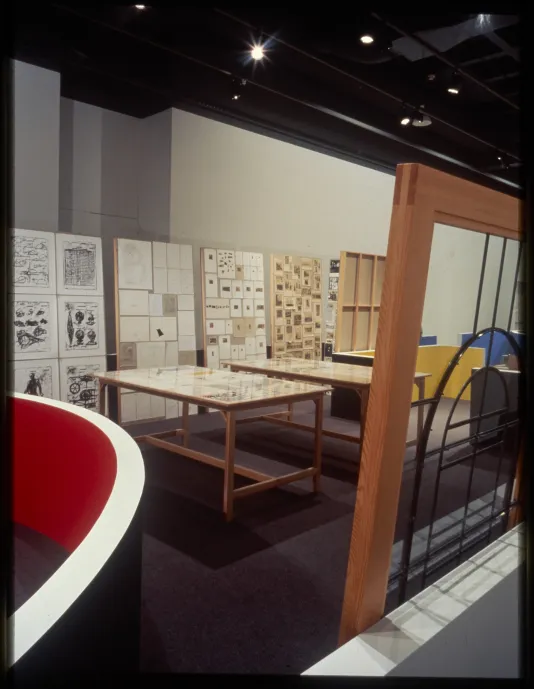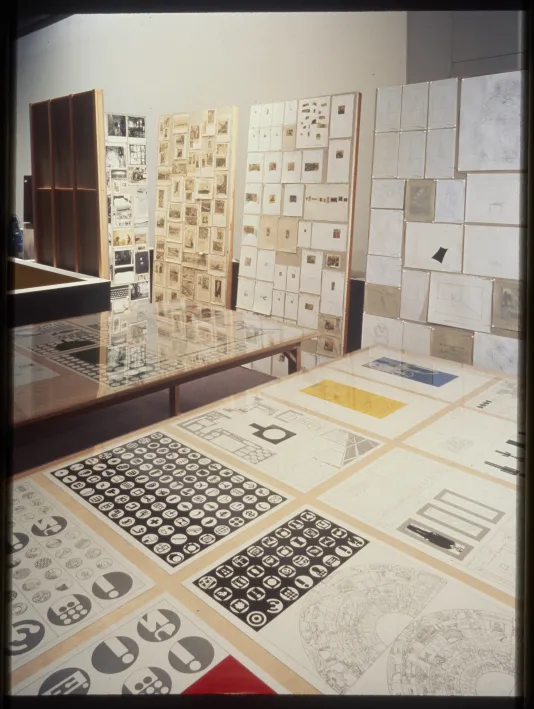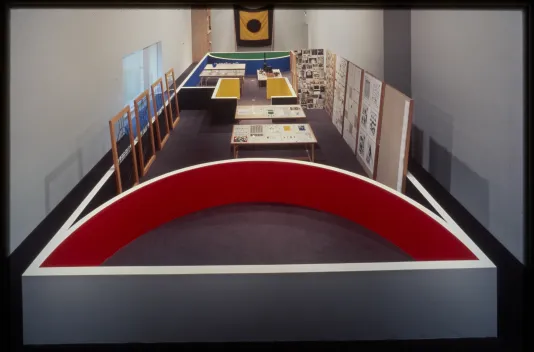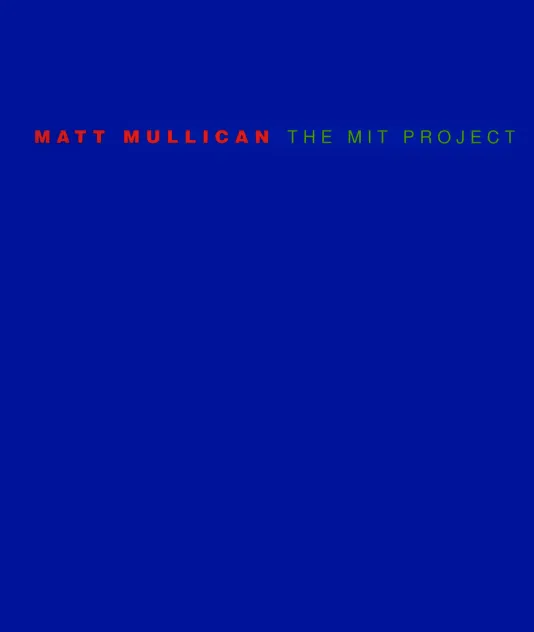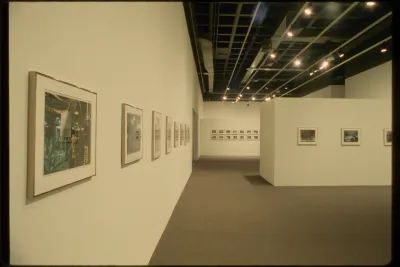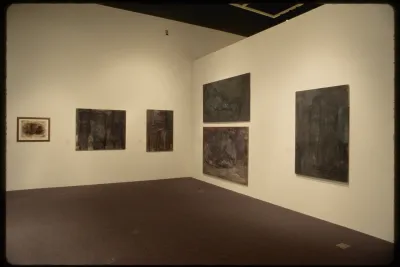Matt Mullican, The MIT Project, 1990. Multimedia installation. Installation view, MIT List Visual Arts Center,1990.
Matt Mullican: The MIT Project
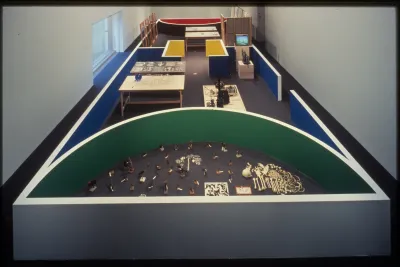
New York artist Matt Mullican has spent fifteen years developing a system of stylized signs and images which configure a conceptual description of the world and our situation within it.
In this new and ambitious installation, The MIT Project, the viewer will enter a quasi-architectural space systematically arranged with found and fabricated objects—including a generator, a skeleton, banners, bulletin boards, and an encyclopedia—all organized within Mullican’s contextual model.
List Center Director Katy Kline has written in the exhibition catalogue, “Matt Mullican thinks about thinking. From the very beginning his single-minded, though multifaceted, body of work has tried to understand the process by which we consider reality. Over the past 15 years Mullican has developed a lexicon of stylized signs and images, a rich vocabulary which is simultaneously personal and generic. He has devised a variety of structures for the signs to organize our world and describe its systems and relationships. An extraordinary range of media have comprised his program, including bulletin boards, fabric banners, posters, stained glass, carved stones, rubbings, tapestries and, most recently, the invisible world of the computer data bank.”
In 1986 Mullican created his first monumentally-scaled encyclopedic collection of images and signs for the Dallas Museum of Art. In the 52 4x8 foot canvas rubbings that comprised The Dallas Project, Mullican created a pictorial catalogue of his cosmological signs and special referential images. The MIT Project is a significant step in Mullican’s work; he has stated, “If The Dallas Project represents a picture of the world, then this new piece will be a world itself.” Found and fabricated objects will replace Mullican’s signs in an architectural environment arranged within the artist’s city model. Inside, the visitor will maneuver through five zones of Mullican’s universe: The World Framed (art), The World Unframed (functional objects), The Elemental World (nature), Language and Signs (information), and The Subjective (the personal, the spiritual).
Publication Available. 48-page, illustrated exhibition catalogue with essay by German philosopher Johannes Meinhardt, an interview with the artist by Michael Tarantino, and a biography and bibliography on the artist.
Sponsors
This exhibition is made possible with support from the Massachusetts Council on the Arts and the National Endowment for the Arts.
